First flying animals: Txitxiburduntzi eta sorginorratza (I)
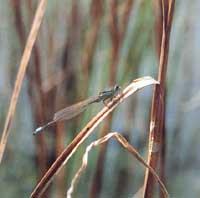
Skewers and cracks are usually classified in the order of Odonata. In fact, dentists are very striking insects from different points of view, since, in addition to their unique way of life, they are totally isolated from the zoological part within the current fauna, presenting countless primitive characteristics. What’s more, it can be said that they are “scrambled”: when they appeared three hundred million years ago, that is, when the plants that we burn today in the form of coal offered them a place to rest, the dentists have lasted for successive periods, in which their basic structure has suffered relatively small variations. The group of Odonatos currently has 5,000 species. If at the same time we remember that mammals, for example, are about 4,000 species, it can certainly be accepted that dentists have passed the cruel test of time.
In any case, unlike the rest of insects, the group of dentists is entirely predatory, both in larval and adult form, feeding on all kinds of invertebrates and even small vertebrates (fry and migas). In addition, the ecological role they play has been so rooted that they have not found the concurrence of other groups of animals that threaten to expel from their livelihood. As it could not be otherwise, this long history that they have run has forced at every moment to the specialization of the team of dentists, so the current brooches and spells can be understood as an amalgam of specialized and archaic traits. That is, we will say that the main keys to the success of dentists have been two: on the one hand, their basic body design has worked properly throughout the changes of the environment and, on the other, their lifestyle is very different.
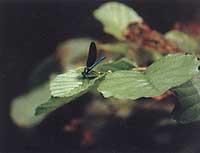
The larvae of the dentists live in sweet waters. However, this sweet character is considered secondary: it is believed that the larvae of the ancestors were terrestrial or that, at least, the almost terrestrial were inhabitants of the moist mosses of the Superior Carboniferous. In any case, few current dental species, especially in the oceanic islands of the southern hemisphere, are terrestrial larvae, but we cannot consider them primitive, since they have evolved from species that contained the larval dulcicas, that is, they do not have the dry ones primarily.
On the contrary, txitxiburduntzi and adult sorcerers have lived together in a single medium throughout evolution: it is aerial beings who always act as hunters. The main condition for carrying out a life of these characteristics is flight ability, along with visual acuity.
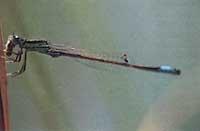
The wings of these animals are completely venous forming a kind of net. Both pairs are membranous and very similar, without resistant structures of frost and other insects, and without scales or small hairs of butterflies. In addition, when the animal is pruned to rest, the wings cannot be bent on the back of the body. Of all the flying insects, the dentists and the efemeropterans present this type of primitive model of south, so the entomologists consider the pterytote insects (= "with wings") paleoptera (= "with aged wings") with technical terminology. With this type of wings, skewers and sorcerers cannot travel through the slits, so they have closed access to that world. In this world, Neoptera insects have triumphed, that is, those who can circulate by folding their wings. Apparently, winged insects (= pterytotes) came from flying insects (= apterytotes) and from a paleopteran ancestor in the next evolutionary step would be neoptera insects.
As has been said, the four wings of the dentists are practically the same, especially in the case of the sorcerers, in which the front and rear pairs are inseparable, both in their form and in the venous wall. It has also been considered a primitive feature, since the vast majority of insects present a southern difference. Similarly, the muscles that move the wings are directly integrated into the bases of the dental wings, so that both pairs of wings can function independently.
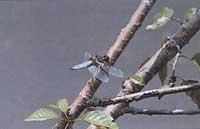
It is not the case of modern insects, in which there is no direct relationship between muscles and wings, and can be achieved very high rates of southern shaking by contraction of the elastic thorax. However, since the rate of shaking is not simply related to the speed of flight, although dentists cannot reach such high rates, large txitxiburduntzas carry out between 20 and 40 flights per second, that is, they can reach flight speeds of 25 to 30 km/h. In fact, the skewers, in spite of the basic southern structure and the paralysis of the flight muscles, compete in speed with the faster winged insects, imposing even in matters of manoeuvre. Perhaps the exception would be diptera.
The view of dentists is very important. Its large compound eyes offer a panoramic view in which you can appreciate any movement from a distance of a few meters. The compound eye is formed by ommatides. In fact, each ommatidium is formed by a system of lenses and eight photoreceptors. However, a large txitxiburduntzi has 30,000 ommatidium in each eye. In turn, 80% of the brain is dedicated to the study of visual information. According to the experiments carried out with models, it is believed that dentists have developed a great rigour in the differentiation of shapes and colors. They also have a special sensitivity to polarized light, which, like bees and ants, can be used for orientation.
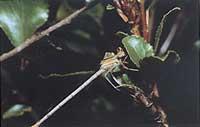
Therefore, dentists live a visual world. The development of the rest of the sensory organs has been very low and the antennas themselves, the main olfactory organs, are almost inappreciable.
Although the flight of a species of txitxiburduntzi is less than two centimeters, most modern dentists are of medium or large size. However, the wings of most of them, at most, do not reach a quarter of the wings of some dentists who lived during the Upper Carboniferous or Permic. The meganeura monyi is the largest fossil of the known time. At the Commentry site, belonging to the department of Basses Alpes in South East France, 300 million years ago was found. Its flight has been estimated at 670 mm, that is, approximately one falcon.
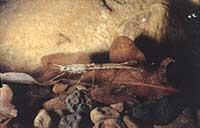
But Meganeura is not the only giant dental of the hour. There are other fossils of similar size. All of them are the first animals that reached the ability to fly, 100 million years before the pterodactile reptiles or 150 million years before the birds conquered the air.
Perhaps, instead of making a true active flight, they would plan for most of the time. In any case, the bodily proportions and the southern shape of these fossils are generally of a great contemporary dental, and their powerful jaws suggest a hunting life. However, there is some difference between these Carbonífero fossils and the current txitxiburduntzis and witches, so some have been classified in the order of Protodonata and others in the order of Odonata. Surely the dentists come from the protodonates in the Baja Permia, which were still numerous.
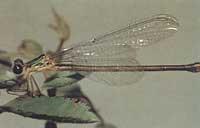
To understand the sizes of these giant fossils we must understand the dam/dam relationship. The protodonates captured the big insects that lived in the trunks of the licopodium shrub of the marshes of that time. This competition focused on the idea that only the biggest won. Thus, when catches grew, predators responded to a growth of the same magnitude, reaching the aforementioned measures.
Current dentists have been classified into three suborders: Zygoptera (= fingerprint), Anisoptera (= skewers) and Anisozygoptera in suborders. The two live species of this last group are limited to the small relictic zones of Japan and the Himalayas, being the first and second groups that we see on our shores. Apart from the deepest zoological peculiarities, to identify these two groups, one takes into account the characteristic that, when placed in the plants, the anisoptera place the wings towards the sides of the body in the horizontal wall, while the zigoptera tend towards the back obliquely. In addition, the anisoptera are of large body and fast flight, being the most delicious zigoptera and delinquents.

Dentists are completely injured for the public. I want to highlight this point, since around these animals there are several superstitions, as indicated by the own name of witches. The other day my friend Xarles Bidegain gave me another piece of information when I asked him about the name of Iparralde of these little animals. Xarles called me “eye”. With regard to me, and making an etymology simple and false, I wanted to see the reference of the great eyes of the dentists under that name. However, as Xarles explained, they are called eyes because people believe they are going into an attack on their eyes. There really is no. But this conviction, as I have found, is also widespread in the South.
What's more, in the opinion of Euskaltzale Gerhard Bähr (RIEV, 1936), the people are very afraid of txitxiburduntzia because it looks like a little flying dragon. This fear has spread in several European regions. Therefore, we have to remember again that these animals do not pose any harm to people, but a benefit, since they feed on mosquitoes.

Finally, let's say that these beautiful animals, although they lack economic or medical value, are irreplaceable on our planet. Unfortunately, after a long history of success, there are many signs that the group of dentists is in danger, especially in the most developed parts of the world. For example, three species of dentists have been destroyed in Britain during this century, two since 1950, and the areas occupied by several species have been drastically reduced, either by industrial pollution, by the excessive use of pesticides, or by drainage tasks, etc.

This tragic history has also been repeated in the Netherlands (nine species have not been detected since 1950), in Switzerland (45 of the 73 dental species have been considered threatened or totally disappeared recently) or in western Germany (72 to all and only 22 to all). And, of course, in us it does not seem to work better, even if there is no concrete data.
Perhaps, knowing and appreciating what we are blindly shattering, we stop the removal of what we destroy and lose.





